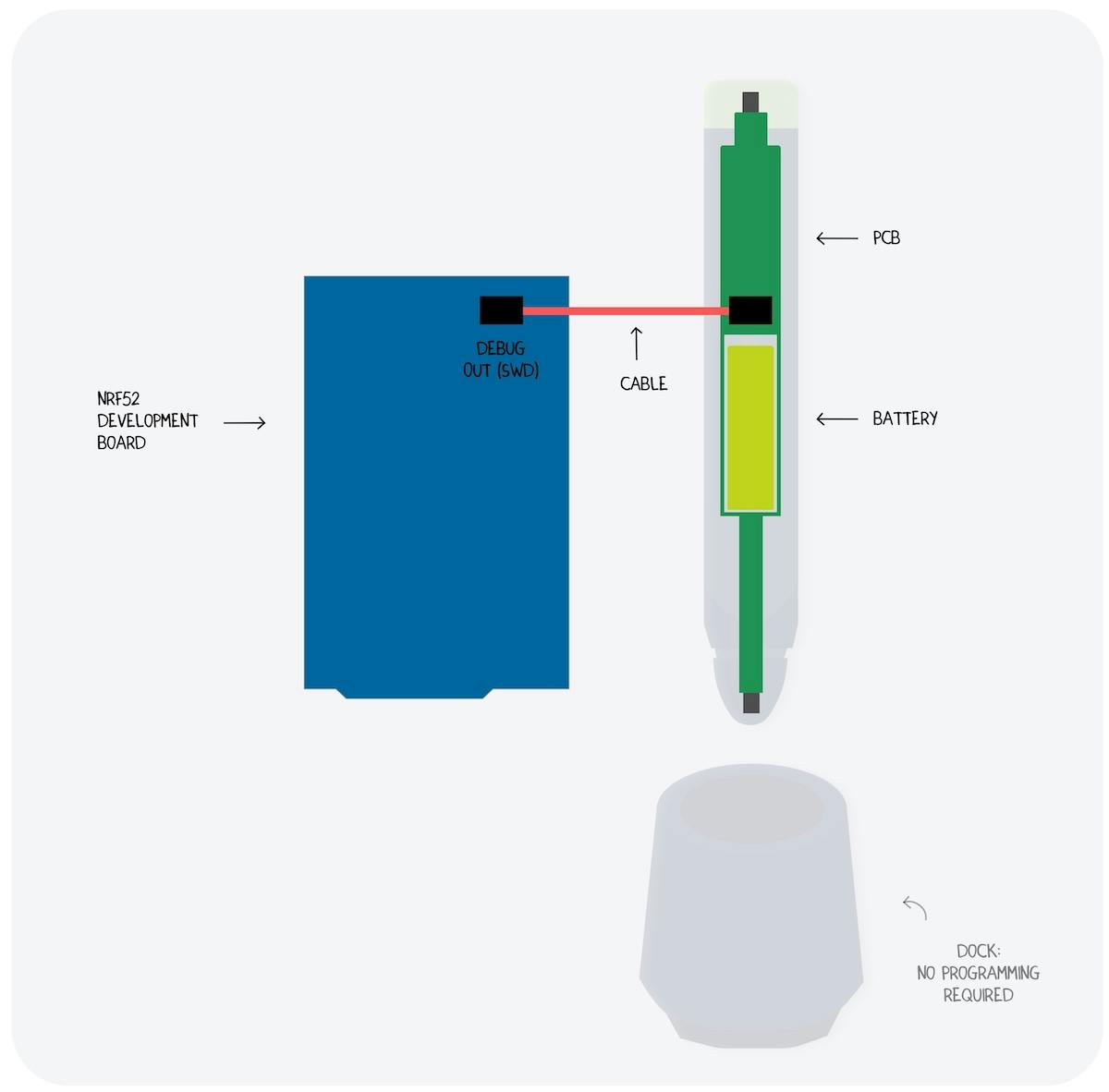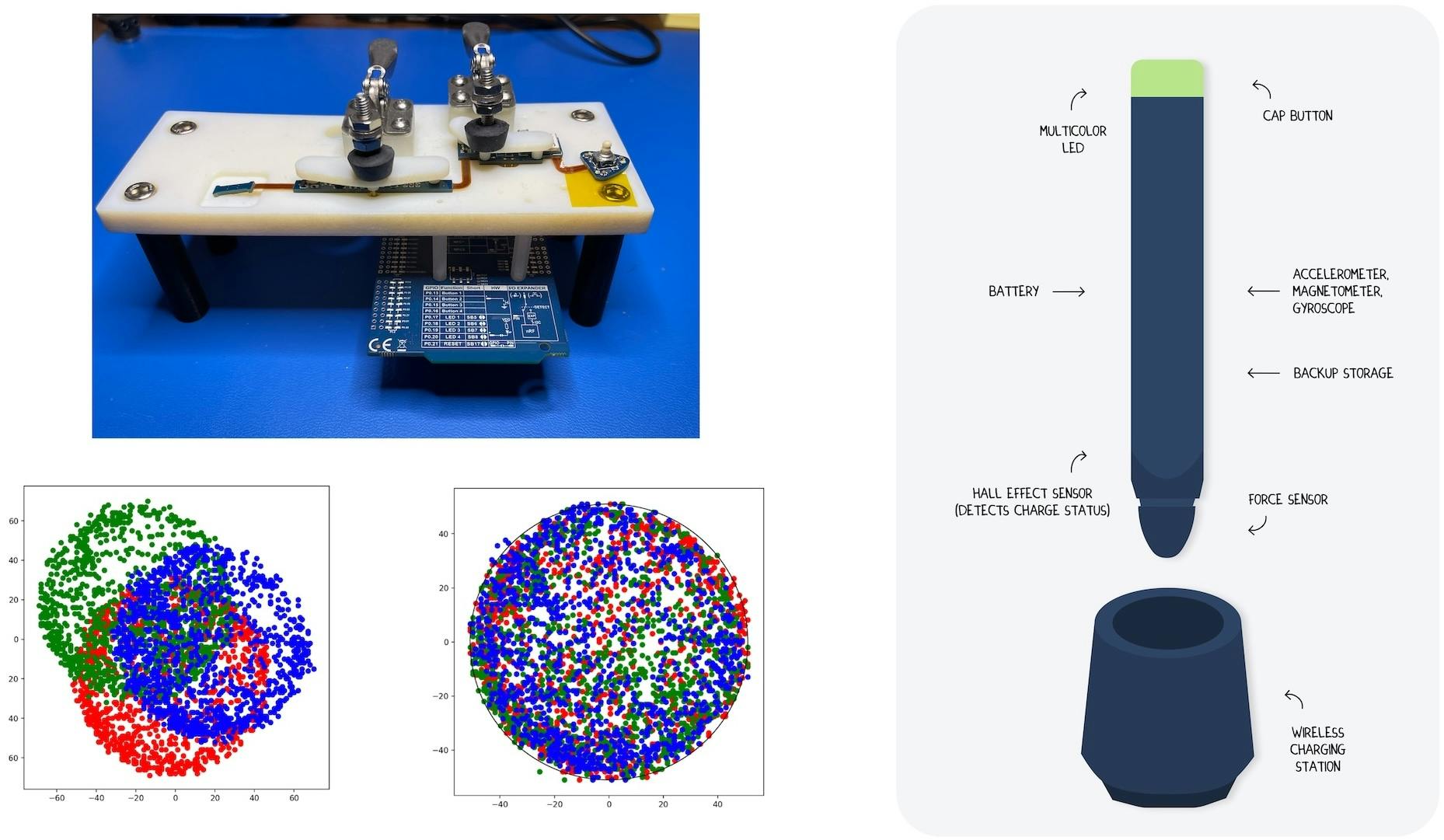Project Overview
Description: Developed the firmware for Stylus, an advanced medical device designed to measure patient function through a series of tests. Equipped with an accelerometer, magnetometer, gyroscope, and a force sensor in the tip, the Stylus works in conjunction with an iPad screen to assess movement disorders, manual dexterity, and other metrics crucial for diagnosing and monitoring conditions such as Parkinson’s disease and other movement disorders.
Objectives:
- Accurately measure and record patient movement and force data.
- Ensure seamless integration with iPad for a user-friendly experience.
- Support healthcare professionals in monitoring movement disorders.
My Role
Position and Responsibilities: As the sole firmware developer, I was responsible for designing, coding, and testing the firmware. This included integrating sensor data processing, ensuring accurate data collection, and developing protocols for data transfer over Bluetooth Low Energy (BLE) to the iPad.
Skills Utilized: Embedded systems programming (C), sensor driver development, data accuracy validation, and Bluetooth communication.
Technical Details
Architecture and Design: The firmware was designed to efficiently process high-frequency data from multiple sensors while maintaining low power consumption. A modular architecture was used to facilitate future updates and additions.
Key Features and Functions:
- Real-time sensor data processing for accurate movement and force measurements.
- Bluetooth LE protocol for efficient data transmission to iPad.
- Low-power design for extended device usage.

Challenges and Solutions
Challenges: Ensuring the accuracy and reliability of sensor data was paramount, given the critical nature of medical diagnostics. Additionally, creating an intuitive iPad interface for non-technical users to interact with the device required careful consideration.
Solutions:
- User Feedback Integration: Conducted user testing sessions with both patients and healthcare professionals to gather feedback on usability. This informed the development of an intuitive interaction flow, simplifying the process of conducting tests.
- Power Management: Employed power management techniques to maximize battery life without compromising performance, ensuring the device could be used for extended periods without recharging.
Results and Impact
Outcomes: The Stylus is currently pending release and will debut at Cleveland Clinic as early as 2025.
Personal Impact: This project enhanced my expertise in embedded systems development, particularly in the context of medical device innovation.
Technologies Used
- Programming Languages and Tools: C for firmware development, Bluetooth Low Energy (BLE) for communication. Several of the sensors needed custom drivers written in C to integrate with the Zephyr RTOS.
Lessons Learned
The development of the Stylus reinforced the importance of precision, reliability, and user-centric design in medical device firmware development.
Contact
For further information about the Stylus project or potential collaboration, feel free to reach out via email.
